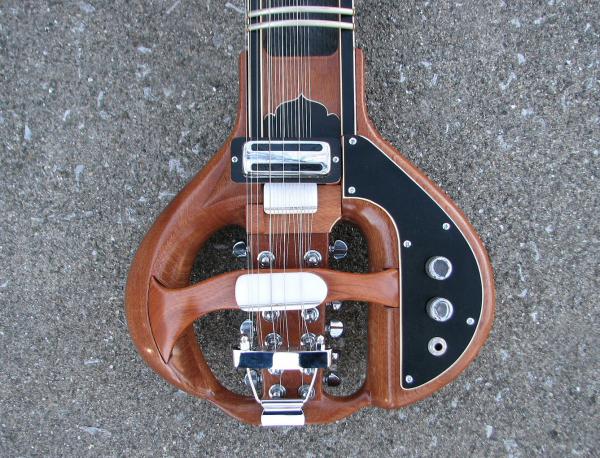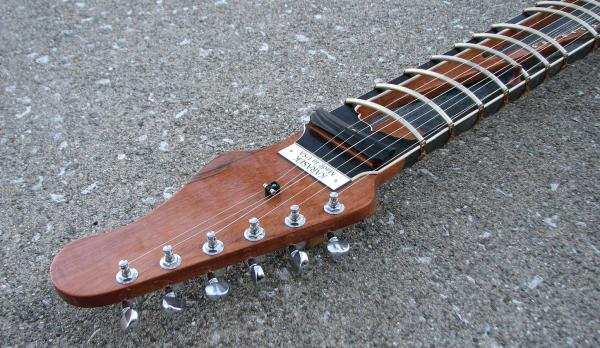jp_nyc
Kick Henry Jackassowski
This is an interesting instrument rebuilt by luthier Tony Karasek, who was Ravi Shankar’s tech in the 1990s and 2000s. It started as a carbon fiber sitar and the owner wanted it converted to geared tuners. That’s a tall order since the strings on a sitar connect to pegs that go through the hollow neck and headstock. So Karasek tore it down and rebuilt it with Grover mini tuners and a Rickenbacker toaster pickup.







